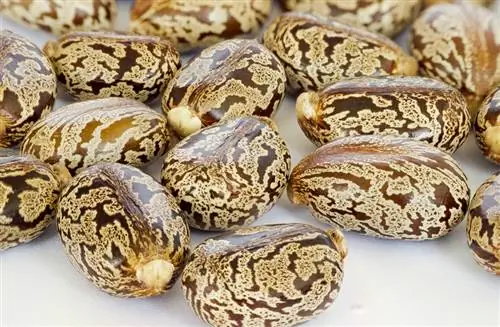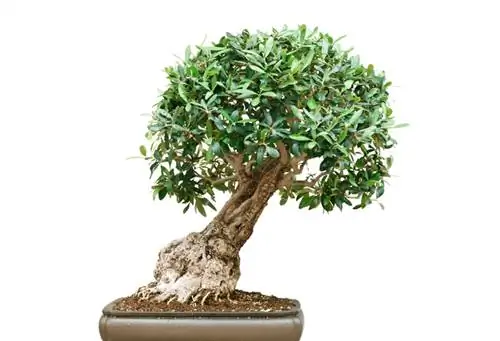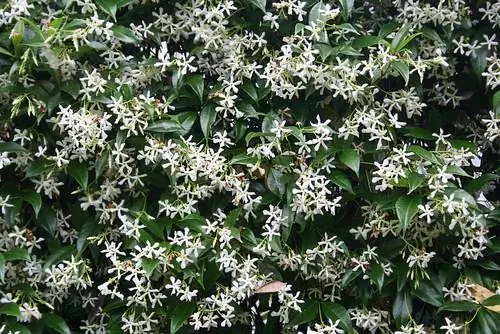- Author admin [email protected].
- Public 2023-12-16 16:46.
- Last modified 2025-01-23 11:20.
Have you decided on a variety of the miracle tree and have you already been busy planting the plant? Now are you wondering what is important in care? Read on and you'll know!

How do you properly care for the miracle tree?
When caring for the miracle tree, you should fertilize monthly, water regularly, make sure that there is no waterlogging and cut if necessary. A frost-free, bright location should be chosen for overwintering and the plant must be protected from snails.
How often should you fertilize the miracle tree and with what?
The miracle tree is considered a heavy feeder. When planting, you should provide it with fertilizer in the form of compost, manure, horn shavings or guano. This gives a real growth spurt. Afterwards, a monthly fertilizer application is good for the plant. However, if kept in a container, it should receive a portion of liquid fertilizer (€9.00 on Amazon) once a week.
Can the plant tolerate drought or does it need to be watered constantly?
Because of its large leaves, the castor bean evaporates a lot of water. It is therefore happy when it is watered or rained on at regular intervals. But in general it tolerates dry periods extremely well. But drought leads to slower growth.
Water the miracle tree from April to September if there is no rain and if you keep the plant in a pot. However, make sure that no stagnant moisture forms! This plant then quickly tends to rot roots.
Is a cut necessary?
If wintering is not planned, you do not need to cut the miracle tree. You can simply pull up the stems and dispose of them in the fall. When overwintering, it is advisable to cut the stems down to the ground.
Can the miracle tree survive the winter without protection?
This is worth knowing when wintering:
- not well hardy
- dies above ground
- Roots usually survive
- In extreme frost: cover the root area with brushwood, leaves or hay
- Overwintering in a bucket: frost-free (10 to 15 °C is ideal) and bright (e.g. in the winter garden)
Which pests are appearing more frequently and what can you do about them?
Snails don't care much about the fact that castor bean is poisonous. They like to eat the young shoots. To protect the plant from this, you can put a clay pot over it every evening. However, remember to remove the pot in the morning!
Tip
A castor bean in a pot needs to be repotted regularly due to its rapid growth. Don't worry: he can handle it without any problems.






